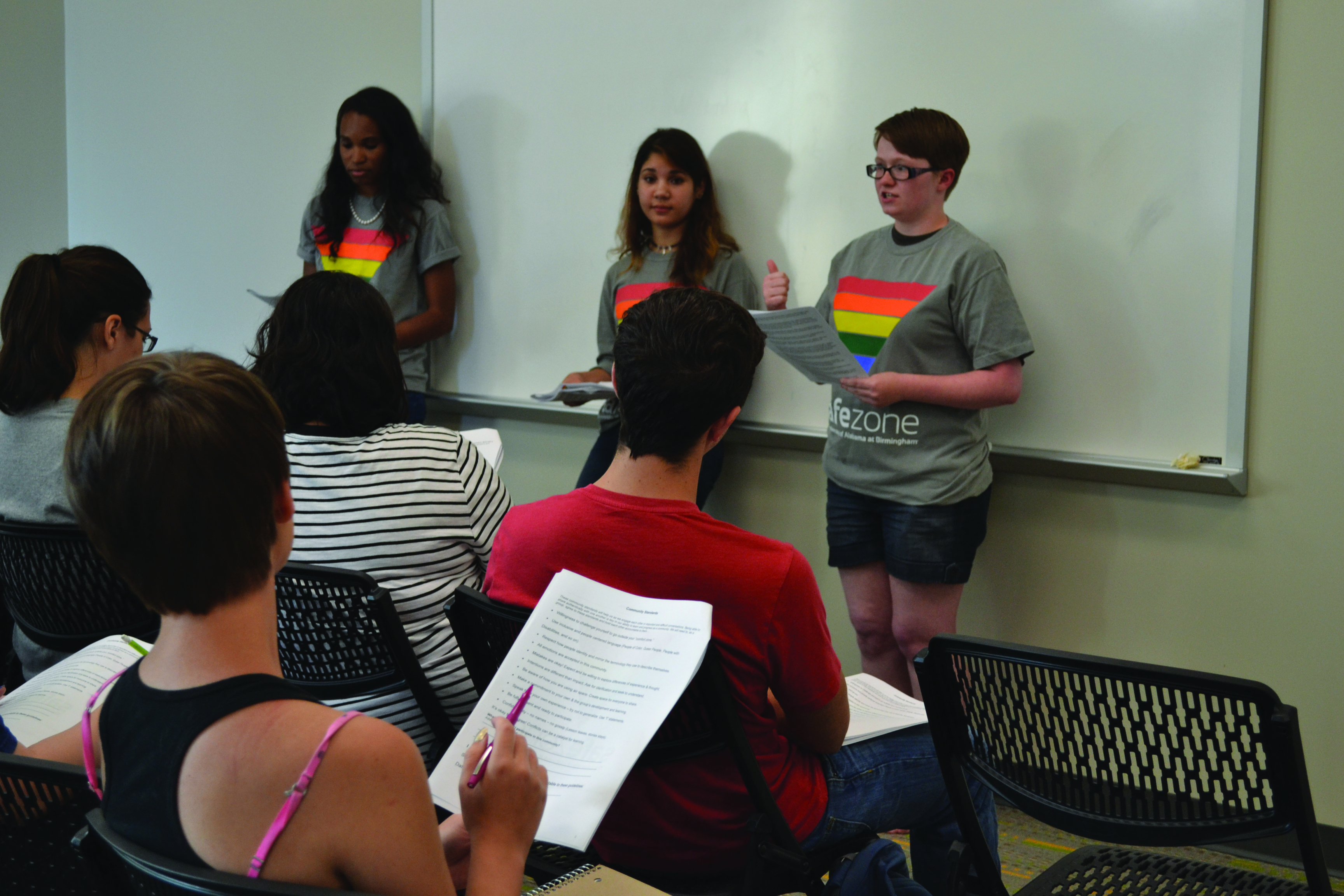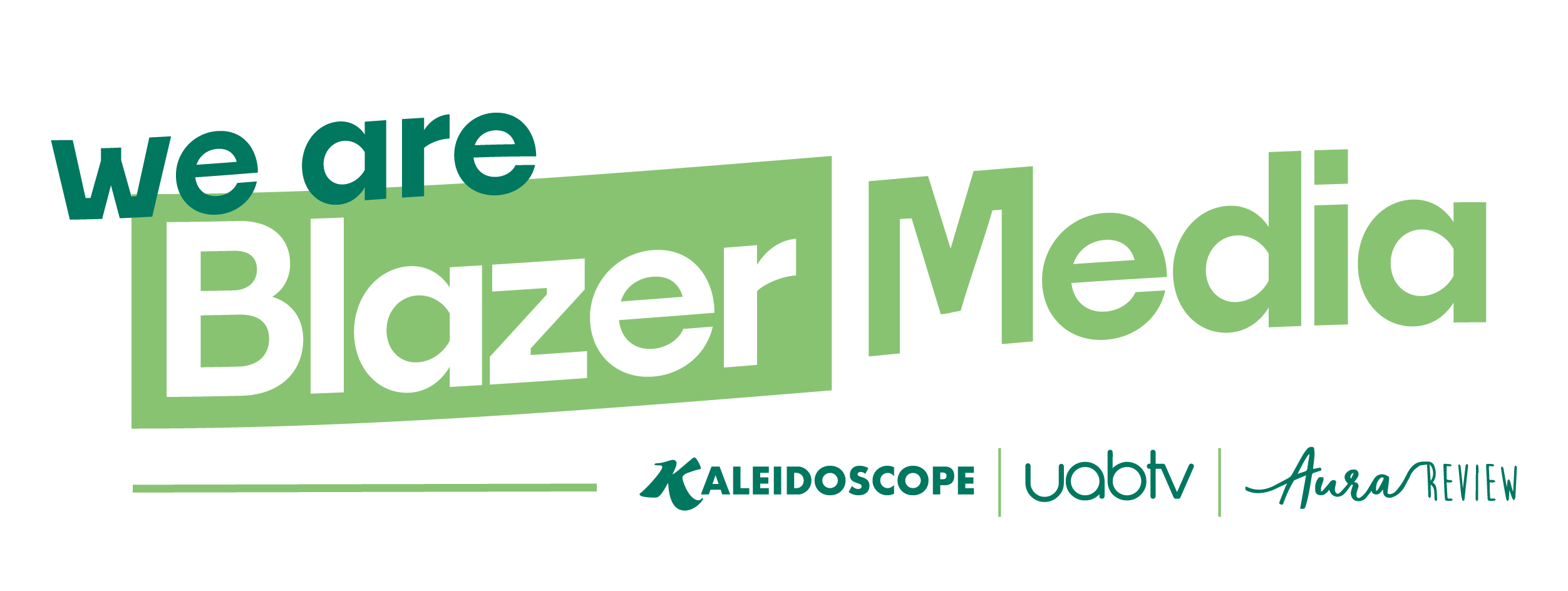
On Sept. 16, SafeZone held a training session on sex and sexuality issues, terminology and campus resources. (Photo by Sarah Adkins).On Sept. 16, SafeZone held a training session on sex and sexuality issues, terminology and campus resources. (Photo by Sarah Adkins).
Ulric Cowley – Staff Writer
ucowley@uab.edu
On Sep. 16, UAB’s SafeZone program hosted a peer training class called Safezone 101 for LGBT counseling and awareness.
SafeZone is a part of the Gender and Sexuality Diversity program and functions as a resource to the UAB community. The program consists of people who are trained to serve as a safe haven for LGBT-identifying students and staff. The SafeZone curriculum consists of three classes this semester: SafeZone 101, SafeZone 201 and Trans 101.
SafeZone 101, hosted in the Cahaba Room of the new freshman residence hall was an introduction to the terminology involved, and it took a close look at the nature of coming out, what it entails for individuals and what it means to be SafeZone certified. SafeZone 201 will take place on Oct. 21 and will be an exploration of identities, “systematic privilege, oppression and social justice,” according to the SafeZone website. Trans 101 will take place on Nov. 18 and will be an introduction to an “in-depth understanding of Trans identities and issues Trans people face on campus.”
“The goal is to make the campus safer for LGBT students, to give them support and to encourage them to be more out with themselves,” said Isaac Jones, a peer educator with the program. “We have certain events that happen on campus that you can find through Bsync. We have Out Week that’s coming up in October, which is a whole week of LGBT-themed events.”
There were about 18 people present at the class, including the three peer educators, and undergraduate and graduate students, alumni and teachers.
The discussion covered the concepts of sex, gender and sexuality. There was also an exercise focused on the intricacies and challenges that are involved with coming out, and how it can affect an individual’s life. The program also featured scenarios where the individuals explored how they could use the knowledge gained in the class and the resources they learned about to benefit the parties involved. Afterward, there was a question-and-answer session between the peer educators and the trainees.
“It helps educate people who are not LGBT in how to talk to those people and how to make them feel safer,” Breezy Ivey, a student present at the class said about the SafeZone program. “In general, being LGBT is still not safe no matter how many strides we make towards it, but it’s getting here and programs like this help.”
